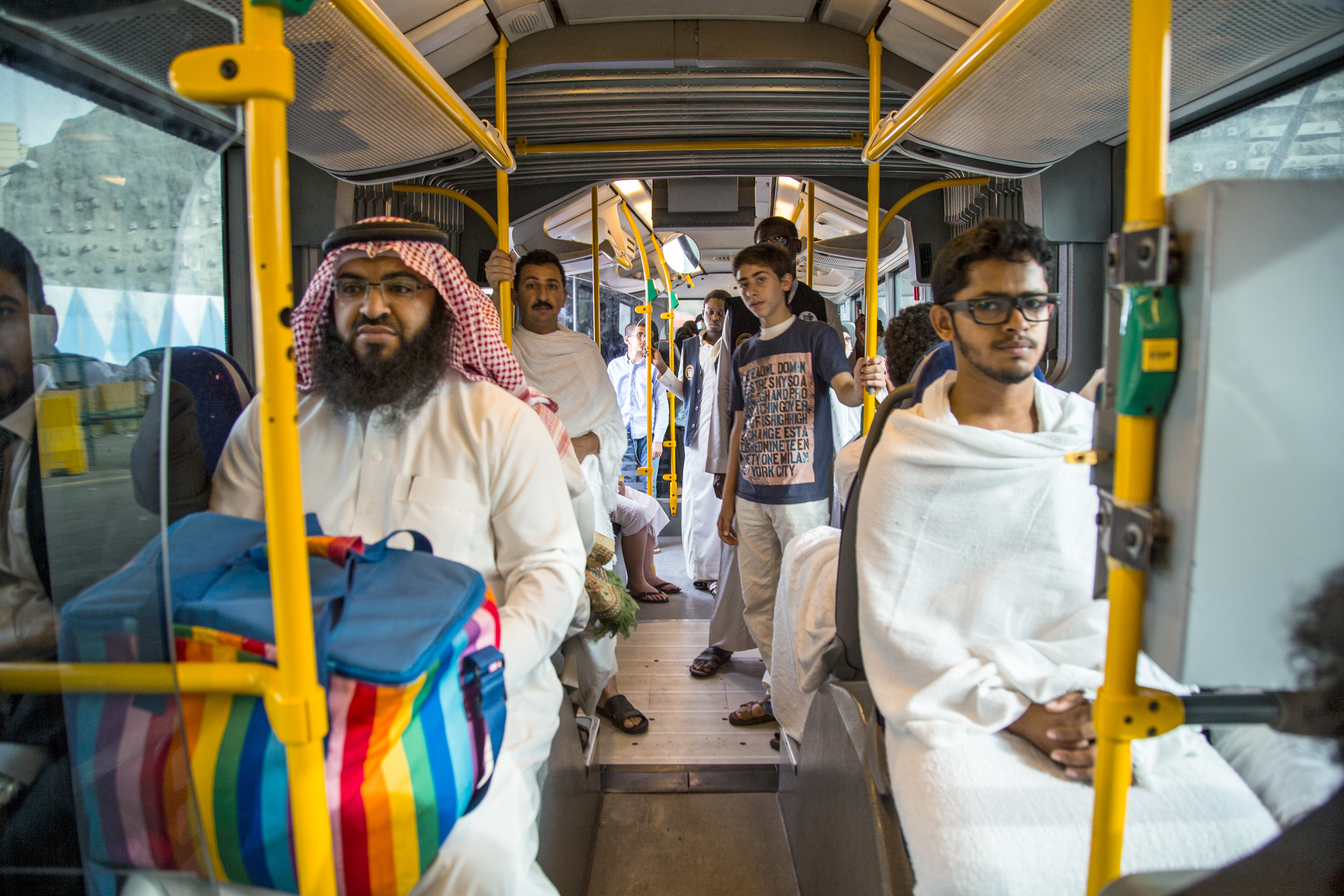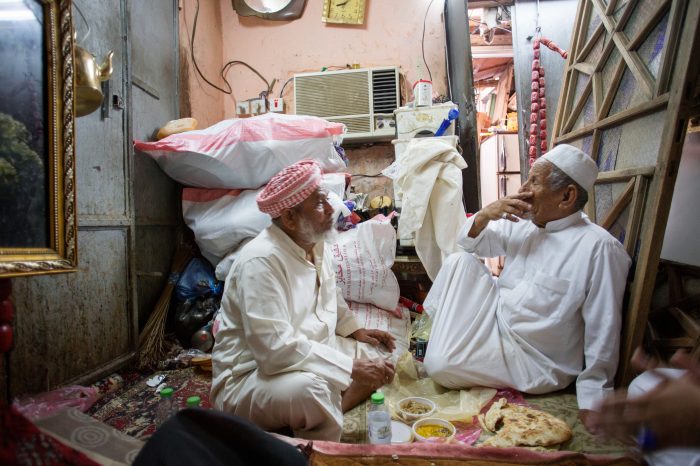
“Both of my practices are about observing and analyzing, about studying systems—whether physical or social,” says the Saudi Arabian artist and physician Ahmed Mater. “Though the two professions seem vastly different—one rooted in science and facts, one more ephemeral, exploring subjective concepts and ideas—I think that the same drive has motivated both,” he says. “For me, it is not that one informs and shapes the other, but rather a sense that the same preoccupations have driven me to both occupations.”
Over the last decade, Mater has emerged as one of the most significant cultural voices in Saudi Arabia by focusing on its holy city. In an exhibition at the Brooklyn Museum, “Ahmed Mater: Mecca Journeys,” Mater shows three bodies of art rendering Mecca—a city that can only be visited by Muslims—in rarely seen detail. The artist’s monumental 2016 photo series Desert of Pharan anchors the exhibition. Shot over several years, the documentary project highlights the voices and experiences of Mecca’s inhabitants and hajj pilgrims, within the global context of the Muslim diaspora.
“Ahmed Mater makes breathtaking photographs that make the mysterious holy site of Mecca all the more real, documenting its power as well as its rapid transformation,” says Anne Pasternak, the director of the Brooklyn Museum. “This is the first major exhibition of Ahmed’s work in the U.S., and at a time of such geopolitical shifts and growing awareness about Islam, the show could not be more timely.”

The experiences of those living in and visiting Mecca are depicted in Leaves Fall in All Seasons, a video work of cell phone footage that captures the lives of immigrant workers. The realities shaping modern Mecca are alluded to in the 2009 conceptual installation Magnetism, a black magnet surrounded by iron filings. The work suggests the congregation of pilgrims around the Kaaba, the holiest Islamic site in the world. On view for the first time at the Brooklyn Museum is Mater’s Mecca Windows, a floor-to-ceiling installation of windows saved from historic buildings that are being demolished in the Saudia Arabian city. The piece represents the complicated relationship between the city’s historic architecture and rapid and robust physical transformation.
“Mecca is shaped by so much more than religion,” says Mater. “It is a real city as much as it is a symbolic city.” He explains that many of his motivations as an artist and physician are tangled up with the politics of contemporary Mecca: “the rapid changes reshaping Saudi Arabia since the rentier era; the unprecedented social structures that they give rise to; the collision of religious and urban environments and the contemporary condition of relentless migration,” explains Mater. “Mecca is a way for us to consider many of the issues that shape the Middle East today.”










 in your life?
in your life?

